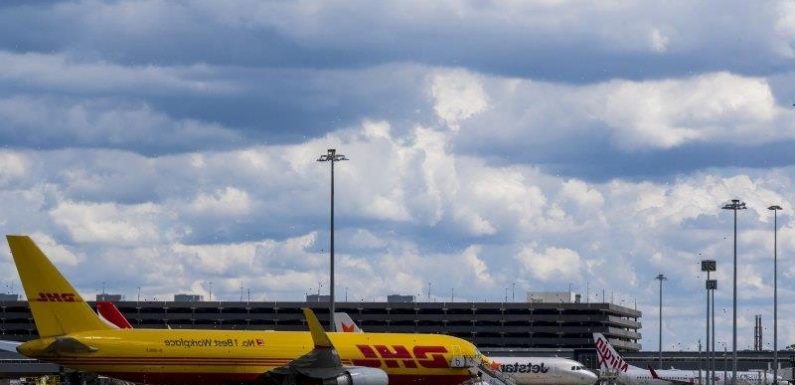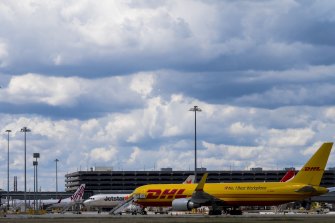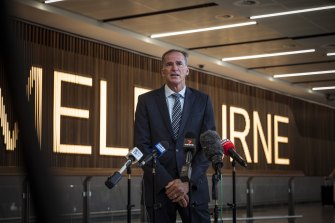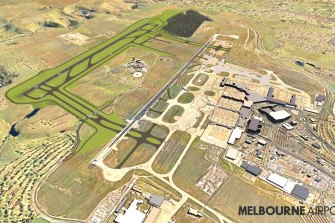
Melbourne Airport plans to have a third runway in operation by the end of the decade, increasing capacity ahead of an expected doubling in the number of passengers to 83 million per year by 2046.
The $1.9 billion north-to-south runway, to open at the earliest in 2027 but more likely in 2028 or 2029, will ease pressure on a system that was frequently causing delays at peak times before COVID-19.
Melbourne Airport with DHL planes. Credit:Chris Hopkins
Residents to the north and south of the airport will be most affected by extra noise from the additional flights, which will become more concentrated over those areas. Any compensation is expected to come in the form of noise-reduction tools such as double-glazed windows.
Melbourne Airport revealed its intention to build the new, 3000-metre runway north to south – rather than the previous plan of east to west – in 2019 before unveiling its updated masterplan on Monday with an increase on the previous estimated cost of $1.5 billion.
Melbourne Airport CEO Lyell Strambi announces plans to build a new runway at Melbourne Airport.Credit:Chris Hopkins
The current east-to-west runway will remain functional but less utilised once the new stretch opens.
A 14-week consultation process with stakeholders including residents of affected suburbs will start on Tuesday before a final plan is submitted to the federal infrastructure minister next year for approval.
The amended configuration of the runways will also trigger a major rework of flight paths over Melbourne, meaning suburbs beyond the immediately neighbouring areas may also become more or less impacted by flight noise.
Chief executive Lyell Strambi said the airport had developed an interactive tool allowing people to enter their address and discover the noise impacts on their properties.
“There are many, many stakeholders interested in the airport and the airport’s development. So of course there’s going to be some people that it may affect more greatly than others,” he said.
“Our job, though, is to come up with a plan that actually works for the greater good, to make sure that the business case for the broader Australian community stacks up and that the benefits clearly outweigh the disadvantages of building and growing an airport. And in our mind, very strongly, that is the case.”
An artist’s impression of the third runway
Mr Strambi said the airport’s existing capacity was on track to be exceeded by 2026. The new runway would enable an extra 23 million passengers and 136,5000 flights a year by 2046, representing 40 per cent more passengers and 43 per cent more flights.
He was confident demand for travel would be revived following the pandemic.
“I don’t think people’s wish and will for connection has gone anywhere. People are still very keen to reconnect,” Mr Strambi said.
“I think what they need though is a little bit of certainty around the rules, around just the environment.”
The airport will not need to acquire neighbouring land to build the runway.
Mr Strambi said possible compensation for affected residents could come in the form of tools to mitigate noise, such as double-glazed windows and noise insulation, and would be organised together with the federal government.
“That’s got to be worked out very much at a detail level, at a house by house level because the story will be very different for different parties. There’s not a one size fits all here.”
More to come.
The Morning Edition newsletter is our guide to the day’s most important and interesting stories, analysis and insights. Sign up here.
Most Viewed in National
From our partners
Source: Read Full Article


